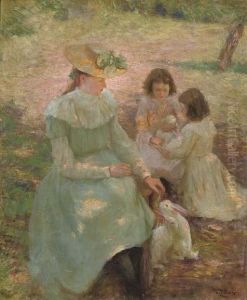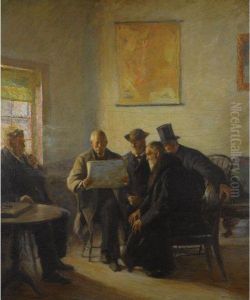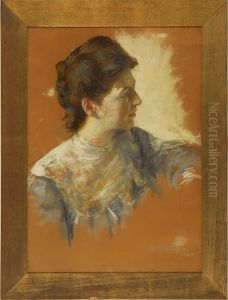Issac Henry Caliga Paintings
Isaac Henry Caliga was an American painter known for his portraits, genre scenes, and interiors. Born on January 2, 1857, in Auburn, Indiana, Caliga showed an early interest in art and pursued his passion through education and practice. He initially studied at the Fort Wayne College of Art and then traveled abroad to further his studies. In Europe, he was significantly influenced by the academic and impressionist styles, which would later reflect in his work.
Upon returning to the United States, Caliga settled in Boston, Massachusetts, where he became a part of the vibrant art scene. He joined the Boston Art Club and was also involved with the Copley Society, where he exhibited his works. Caliga's portraits were particularly noted for their sensitivity and attention to the psychological aspects of the sitter. His use of light and shadow, along with a subtle color palette, helped to create a distinct style that was both refined and expressive.
Caliga's work was recognized with various awards throughout his career. He participated in important exhibitions, including those at the Pennsylvania Academy of the Fine Arts and the Art Institute of Chicago. His paintings are part of several collections, and his contribution to American art from the late 19th to the early 20th century has been appreciated by both critics and art lovers.
Although primarily known for his portraits, Caliga also painted still lifes and interior scenes that captured the tranquility and elegance of the domestic life of his era. His genre scenes are often imbued with a quiet narrative that invites viewers to ponder the story behind the image.
Caliga continued to paint throughout his life, contributing to the cultural landscape of his time. He passed away on February 24, 1946, in Provincetown, Massachusetts, leaving behind a legacy as a skilled painter who captured the essence of his subjects with grace and nuance. His works continue to be studied and displayed, offering insights into the artistic trends and societal values of his time.


